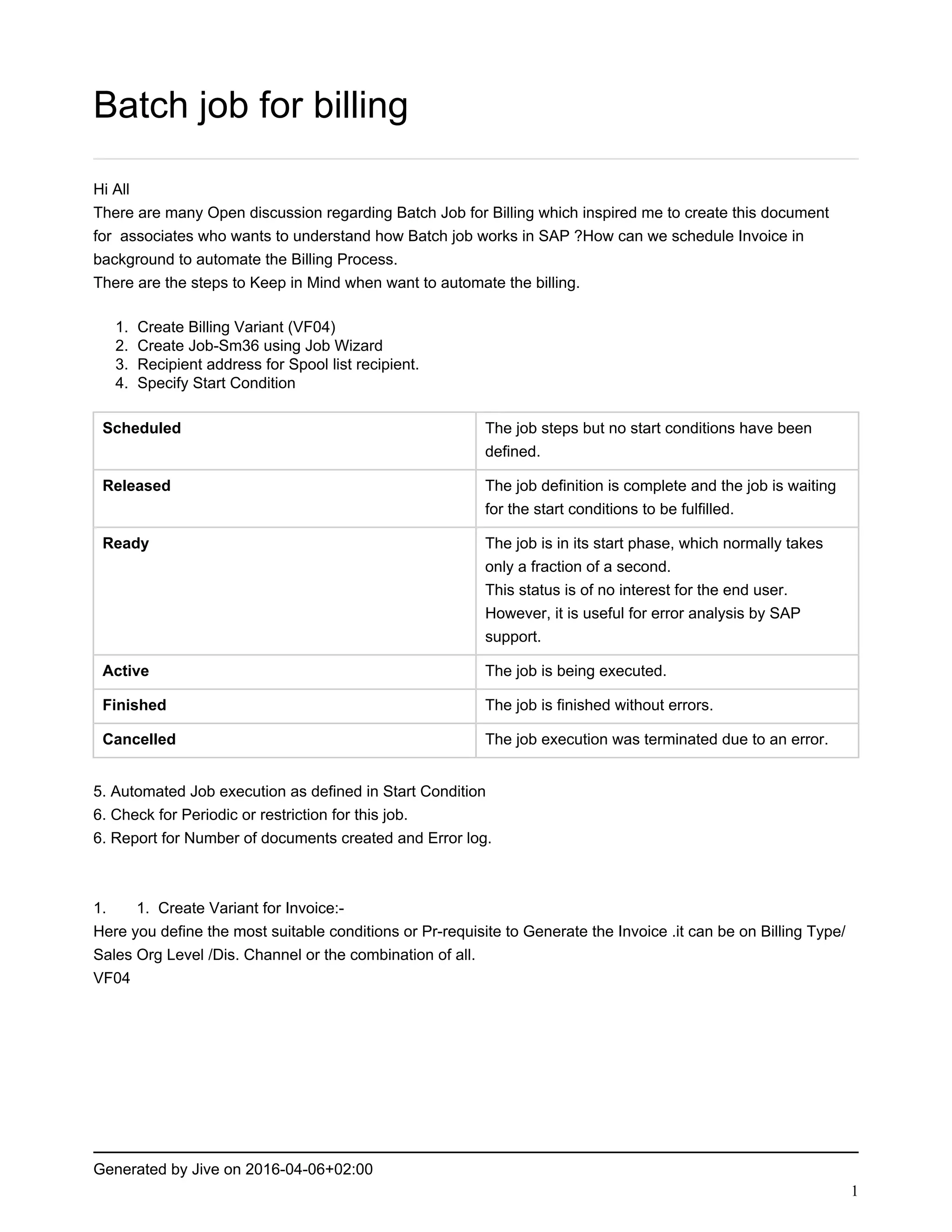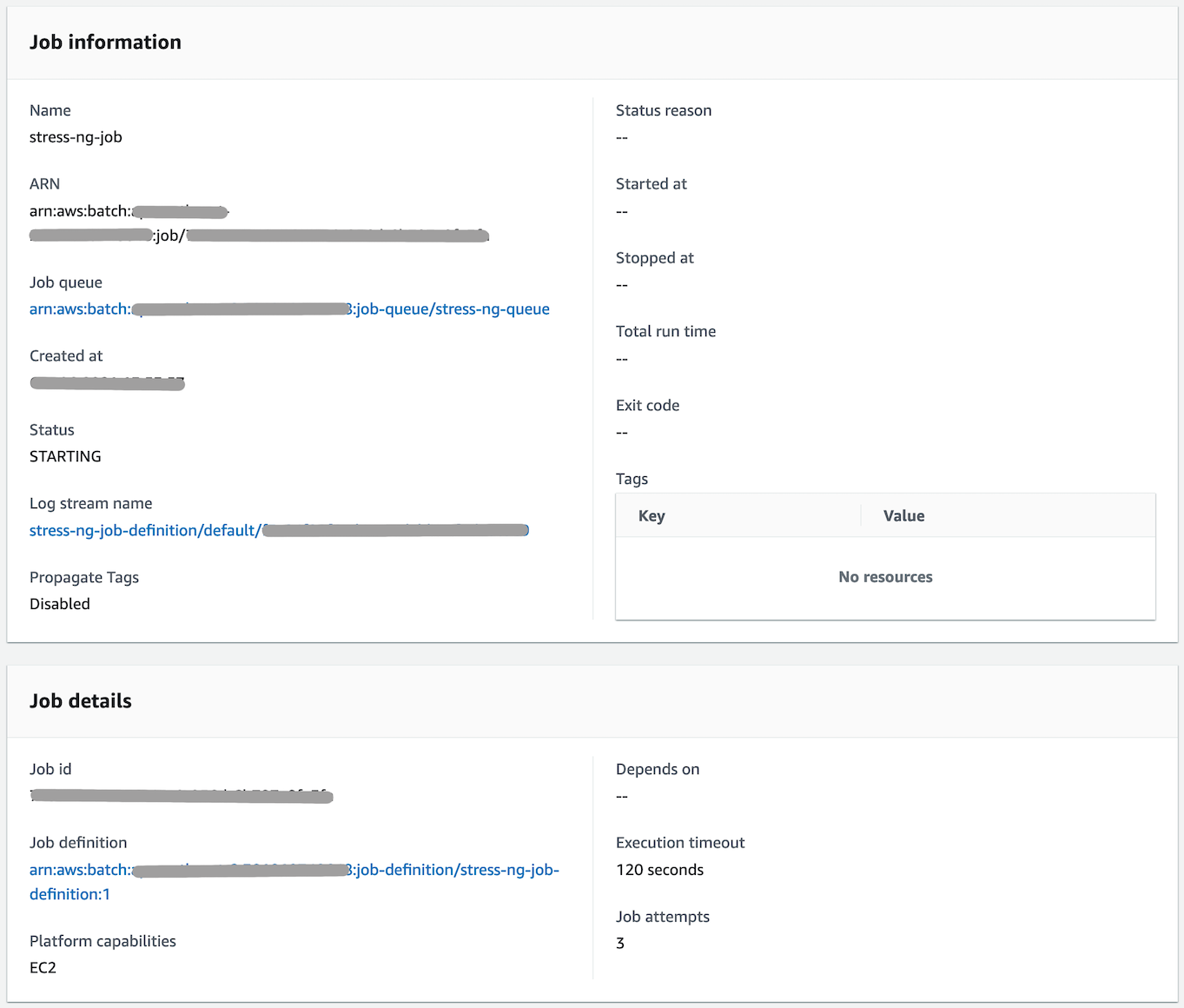Mastering RemoteIoT Batch Job Example: A Comprehensive Guide
Hey there, tech enthusiasts! If you've been diving into the world of IoT and automation, chances are you've stumbled upon the term "RemoteIoT Batch Job Example." This is no ordinary tech concept; it's a game-changer for those looking to streamline data processing in their IoT systems. So, buckle up because we're about to unravel the mysteries behind remote IoT batch jobs and why they matter so much in today's tech-driven world.
Imagine a scenario where you need to handle thousands of data points from various IoT devices. How do you ensure everything runs smoothly without causing system overload? That's where remote IoT batch jobs come in. These jobs allow you to process data in chunks, making your system more efficient and manageable. Think of it like eating a giant pizza—one slice at a time instead of trying to devour the whole thing in one go.
Now, before we dive deeper, let's get one thing straight: understanding remote IoT batch job examples isn't just for tech wizards. Whether you're a developer, a business owner, or simply someone curious about IoT, this guide will help you grasp the basics and beyond. So, let's get started and explore the ins and outs of remote IoT batch jobs!
Understanding RemoteIoT Batch Job Example
What Exactly is a RemoteIoT Batch Job?
A remote IoT batch job is essentially a set of instructions that tells your system how to process large amounts of data collected from IoT devices. Instead of processing everything in real-time, which can be overwhelming, batch jobs break down the data into smaller, more manageable chunks. This method is particularly useful when dealing with massive datasets that require thorough analysis.
For example, imagine you're running a smart agriculture system with hundreds of sensors monitoring soil moisture, temperature, and humidity. A remote IoT batch job would allow you to collect all this data periodically and analyze it during off-peak hours, ensuring your system remains stable and responsive.
Why Are RemoteIoT Batch Jobs Important?
Here's the deal: real-time data processing is great, but it's not always practical. Remote IoT batch jobs offer several advantages, including:
- Discover The Secrets Of The May 25 Zodiac Your Cosmic Guide
- Why Movies 4u Is The Ultimate Destination For Movie Lovers
- Reduced system load by processing data in batches rather than all at once.
- Improved accuracy through systematic data analysis.
- Cost savings by optimizing resource usage.
- Enhanced scalability, allowing systems to grow without compromising performance.
These benefits make remote IoT batch jobs a go-to solution for businesses looking to harness the power of IoT without the headaches.
Setting Up Your First RemoteIoT Batch Job Example
Step 1: Identifying Your Data Sources
Before you can set up a remote IoT batch job, you need to know where your data is coming from. This could be anything from smart home devices to industrial sensors. Take some time to map out all the devices in your network and identify the types of data they generate. This will give you a clear picture of what you're working with.
Step 2: Choosing the Right Tools
There are plenty of tools and platforms available for setting up remote IoT batch jobs. Some popular options include:
- Apache Kafka: Ideal for handling real-time data streams.
- Amazon Kinesis: Great for processing large-scale data streams in the cloud.
- Google Cloud Dataflow: Perfect for batch and stream processing.
Choose the one that best fits your needs and budget. Remember, the right tool can make all the difference in the efficiency and effectiveness of your batch jobs.
Common Challenges in RemoteIoT Batch Job Implementation
Data Security Concerns
When dealing with remote IoT batch jobs, data security is a top priority. Ensuring that your data is protected from unauthorized access is crucial, especially when handling sensitive information. Implementing encryption and secure communication protocols can help mitigate these risks.
System Scalability
As your IoT network grows, so does the amount of data you need to process. Ensuring that your system can scale efficiently without compromising performance is another challenge. Regular system audits and updates can help you stay ahead of the curve.
Real-World RemoteIoT Batch Job Examples
Example 1: Smart City Traffic Management
In a smart city, IoT sensors are used to monitor traffic patterns. A remote IoT batch job can collect this data periodically and analyze it to identify trends and potential bottlenecks. This information can then be used to optimize traffic flow and reduce congestion.
Example 2: Predictive Maintenance in Manufacturing
Manufacturing plants use IoT sensors to monitor the health of their machinery. By setting up remote IoT batch jobs, they can analyze this data to predict when equipment might fail, allowing for timely maintenance and minimizing downtime.
Best Practices for RemoteIoT Batch Job Optimization
Regular Maintenance
Just like any other system, remote IoT batch jobs require regular maintenance to function optimally. Schedule routine checks to ensure everything is running smoothly and make adjustments as needed.
Monitoring and Analytics
Implementing robust monitoring and analytics tools can help you track the performance of your batch jobs. This will allow you to identify any issues early and take corrective action before they escalate.
Future Trends in RemoteIoT Batch Job Technology
Edge Computing
Edge computing is set to revolutionize the way we handle remote IoT batch jobs. By processing data closer to the source, edge computing reduces latency and improves system responsiveness. This technology is expected to become more prevalent in the coming years.
Artificial Intelligence Integration
AI is increasingly being integrated into IoT systems to enhance data processing capabilities. Machine learning algorithms can analyze data patterns and make predictions, further optimizing the efficiency of remote IoT batch jobs.
Benefits of RemoteIoT Batch Job Example for Businesses
Cost Efficiency
One of the biggest advantages of remote IoT batch jobs is cost efficiency. By processing data in batches, businesses can reduce the strain on their systems, leading to lower operational costs. Additionally, the ability to scale efficiently means businesses can grow without incurring excessive expenses.
Enhanced Decision-Making
With remote IoT batch jobs, businesses gain access to more accurate and comprehensive data, enabling them to make better-informed decisions. Whether it's optimizing operations or improving customer experiences, the insights gained from batch job analysis can drive significant business value.
Conclusion
RemoteIoT batch job examples are a powerful tool for anyone looking to harness the full potential of IoT technology. From streamlining data processing to enhancing system efficiency, the benefits are undeniable. By understanding the basics and following best practices, you can unlock the power of remote IoT batch jobs and take your IoT projects to the next level.
So, what are you waiting for? Dive into the world of remote IoT batch jobs and start transforming the way you handle data. And remember, if you found this guide helpful, don't forget to share it with your fellow tech enthusiasts. Together, we can make the world of IoT a little brighter—one batch job at a time!
Table of Contents
- Understanding RemoteIoT Batch Job Example
- Setting Up Your First RemoteIoT Batch Job Example
- Common Challenges in RemoteIoT Batch Job Implementation
- Real-World RemoteIoT Batch Job Examples
- Best Practices for RemoteIoT Batch Job Optimization
- Future Trends in RemoteIoT Batch Job Technology
- Benefits of RemoteIoT Batch Job Example for Businesses
- Conclusion
- Discover The Secrets Of The May 25 Zodiac Your Cosmic Guide
- Ultimate S Words To Describe Your Beloved

Understanding Batch Auctions CoW DAO

Batch job schedule PDF

g. Run a Single Job AWS HPC